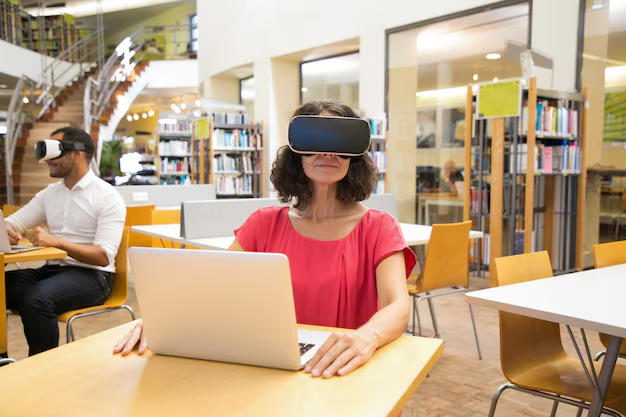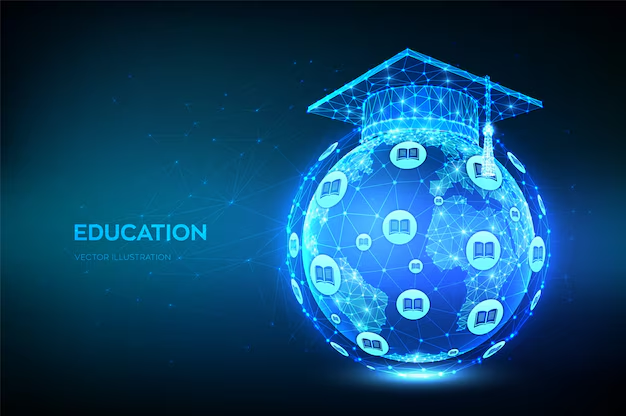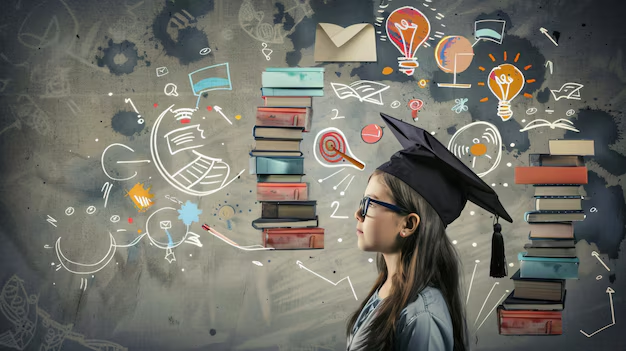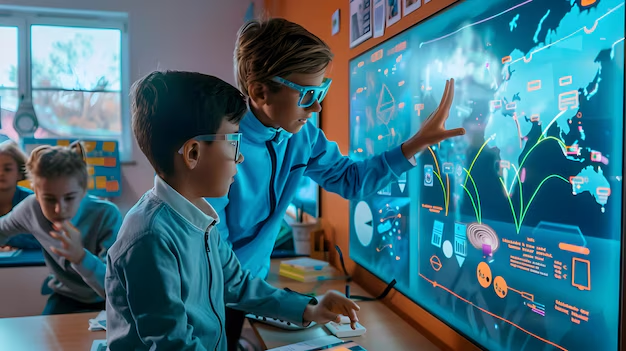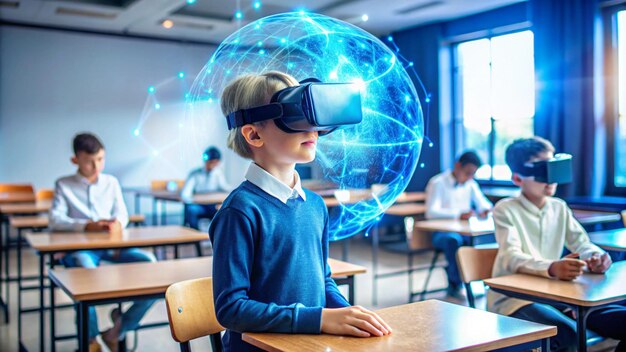Education has always been the cornerstone of personal growth and societal progress. However, with the rapid advancements in technology, the traditional educational landscape is being reshaped. The future of education is one that embraces innovation and technology, enabling more efficient learning experiences, wider accessibility, and personalized education. In this article, we’ll explore how technology is transforming education and what the future holds for students, educators, and institutions.
Keywords: future of education, education innovation, technology in education, digital learning, educational technology, future learning, AI in education, online learning, smart classrooms, EdTech
1. The Rise of Digital Learning: A Game Changer for Education
Digital learning has gained significant traction over the last decade, and its influence is only set to grow. With the advent of online learning platforms, students can now access educational materials and courses from anywhere in the world. This shift has made education more accessible and flexible, allowing learners to study at their own pace.
- Online Learning Platforms: Websites like Coursera, Udemy, and Khan Academy offer diverse courses, making education available to a global audience. This democratization of knowledge is empowering individuals to learn without geographical barriers.
- E-Learning Tools and Resources: Tools like interactive videos, webinars, and online assessments are enhancing the learning experience. These resources provide instant feedback, promote active learning, and allow for a more engaging experience.
- Key Point: The shift to digital learning has made education more accessible, flexible, and engaging.
- Further Detail: With the rise of e-learning, students no longer have to be confined to traditional classrooms to gain knowledge. The future of education involves a hybrid model, combining online and offline learning experiences.
Keywords: digital learning, online education, e-learning, online learning platforms, interactive tools, flexible education, accessible education
2. The Role of Artificial Intelligence (AI) in Personalized Learning
Artificial Intelligence (AI) is one of the most powerful tools revolutionizing education today. AI can adapt to the needs of individual students, creating personalized learning experiences that improve retention and understanding.
- Smart Content: AI-powered tools help curate content for learners, delivering personalized lessons based on their strengths and weaknesses. This leads to more effective and targeted learning.
- Virtual Tutors and Assistants: AI-driven chatbots and virtual assistants are available 24/7, offering students real-time help with assignments, exams, and general inquiries.
- Predictive Analytics: AI can analyze student data to predict performance and identify students at risk of falling behind. Educators can then intervene early, providing the support needed to help students succeed.
- Key Point: AI enables personalized learning by adapting to individual needs and providing real-time support.
- Further Detail: AI is not only enhancing learning outcomes but also reducing the burden on educators, allowing them to focus on delivering more engaging and dynamic lessons.
Keywords: artificial intelligence, personalized learning, AI tutors, smart content, virtual assistants, AI in education, predictive analytics
3. The Integration of Virtual and Augmented Reality (VR/AR) in the Classroom

Virtual and Augmented Reality (VR/AR) are set to revolutionize the educational experience by offering immersive learning environments. These technologies allow students to explore concepts in ways that were once unimaginable.
- Immersive Learning Experiences: VR allows students to take virtual field trips to historical sites or explore complex scientific concepts in 3D. This hands-on learning experience fosters a deeper understanding of the subject matter.
- Augmented Reality for Interactive Learning: AR enhances traditional learning methods by overlaying digital information onto the physical world. Students can engage with interactive 3D models, making abstract concepts tangible and engaging.
- Key Point: VR and AR are changing the way students learn by creating interactive, immersive experiences.
- Further Detail: As VR and AR become more affordable, they will become commonplace in classrooms, enhancing both STEM education and the arts.
Keywords: virtual reality in education, augmented reality, immersive learning, VR classrooms, AR learning, interactive learning tools
4. Smart Classrooms: The Future of Collaborative Learning
The future of education also includes the rise of “smart classrooms,” equipped with advanced technology to facilitate collaboration, engagement, and efficiency. These classrooms are designed to harness the power of the internet, cloud computing, and smart devices.
- Interactive Whiteboards and Tablets: Smartboards allow teachers to present lessons in dynamic and engaging ways, while tablets give students easy access to digital resources and collaborative tools.
- Cloud-Based Learning: Cloud technology enables students and teachers to access materials and assignments from anywhere, fostering collaboration and communication beyond the classroom.
- Key Point: Smart classrooms leverage technology to enhance collaboration, engagement, and student performance.
- Further Detail: By incorporating real-time feedback, digital assessments, and multimedia presentations, smart classrooms foster more effective learning experiences.
Keywords: smart classrooms, collaborative learning, interactive whiteboards, cloud learning, digital classrooms, smart devices in education
5. The Importance of Lifelong Learning in a Technology-Driven World
As the world continues to evolve rapidly due to technological advancements, lifelong learning has become a necessity. Professionals need to continuously upskill and adapt to new technologies and methodologies to remain competitive in the workforce.
- Microlearning and Bite-Sized Education: With the increasing demand for flexible learning, microlearning has gained popularity. This involves small, easily digestible lessons that professionals can fit into their busy schedules.
- Corporate Training and Online Courses: Businesses are increasingly investing in online training programs to upskill their employees. Platforms like LinkedIn Learning and Skillshare offer various professional development courses.
- Key Point: Lifelong learning is essential for adapting to the fast-paced changes in the modern workforce.
- Further Detail: In the future, educational institutions and employers will collaborate to provide continuous learning opportunities that cater to the needs of the modern workforce.
Keywords: lifelong learning, professional development, microlearning, continuous education, upskilling, corporate training
Conclusion
The future of education is undeniably intertwined with technology and innovation. From digital learning platforms and AI-powered tools to VR/AR integration and smart classrooms, technology is revolutionizing the way we learn. As we continue to embrace these advancements, education will become more accessible, personalized, and efficient, empowering students worldwide to reach their full potential.
Keywords: future of education, technology in education, innovation in learning, educational transformation, digital education
SEO Optimization Tips:
- Keyword Integration: Include relevant keywords like “future of education,” “educational technology,” and “digital learning” in the body, headings, and meta tags.
- Internal Linking: Link to other related articles on educational technology and trends to improve user engagement and SEO ranking.
- Header Tags: Use H1 for the main title, H2 for the section titles, and H3 for subheadings to make the content more structured for search engines.
- Image Optimization: If you include images, make sure to add alt text that includes relevant keywords to enhance SEO.

